When it comes to Hollywood’s glittering facade, there’s often a shadowy underbelly of scandals that capture public attention. The allure of fame and fortune is perpetually entwined with tales of controversy and shock, creating a tapestry of stories that range from the sensational to the scandalous. Hollywood, known for its blockbuster hits and star-studded events, also becomes the epicenter of some of the most startling celebrity missteps and unexpected downfalls.
In the world of celebrity culture, the line between personal and public blurs, leading to moments of unexpected drama that quickly become fodder for the media. These incidents, varying from salacious love affairs to jaw-dropping betrayals. They don’t just stay confined to the tabloids. They spread like wildfire across the internet, sparking discussions, debates, and even influencing the course of pop culture.
Celebrity misfortunes and public gaffes have long been subjects of public intrigue. The year 2023, for instance, was no exception, serving up a mix of cringeworthy sexts, dramatic confrontations, and high-profile court cases. These events keep us on the edge, eager to see what unfolds next in the seemingly unscripted reality show that is celebrity life.
But what makes these scandals so captivating? Is it the shock value, the breach of trust, or a deeper reflection of societal norms? In this exploration of Hollywood’s most shocking scandals, we delve into not just the incidents themselves but also their broader implications. Each scandal tells a story beyond the headlines, shedding light on the intricate dynamics of fame, power, and public perception in the modern world. So, as we embark on this exploration of Hollywood’s most notorious scandals, prepare to uncover the layers that make these stories more than just tabloid material, but a fascinating study of human nature and celebrity culture.
10 – The Fatty Arbuckle Scandal
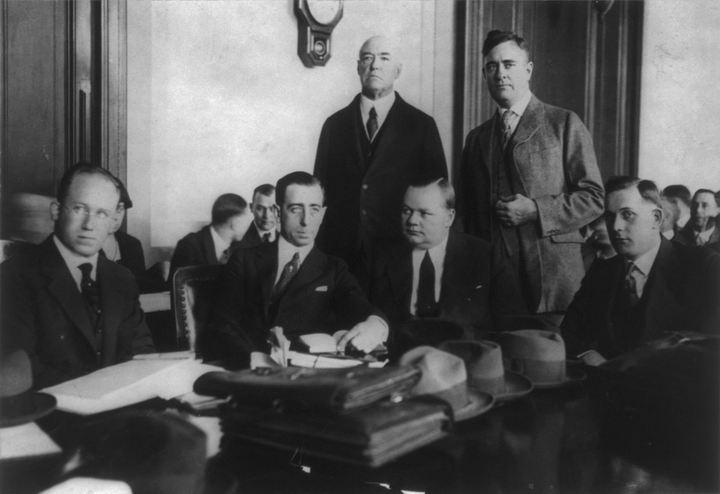
The Fatty Arbuckle scandal in the 1920s is one of Hollywood’s earliest and most notorious controversies. In September 1921, at a party in the St. Francis Hotel, San Francisco, comedian Roscoe “Fatty” Arbuckle and actress Virginia Rappe found themselves at the center of a scandal. The party, noted for its excessive alcohol consumption despite Prohibition laws, ended tragically when Rappe suffered a fatal injury, leading to her death four days later due to a ruptured bladder.
Arbuckle was accused of sexual assault and manslaughter, igniting a media frenzy and a series of trials. The trials, filled with contradictory testimonies, eventually led to Arbuckle’s acquittal. However, the scandal irreparably tarnished his reputation. Despite his acquittal, the motion picture industry, led by Will H. Hays and influenced by Adolph Zukor, banned Arbuckle’s films, and he faced public ostracization.
This scandal highlighted the potent mix of celebrity, sensationalism, and the American justice system, setting a precedent for how Hollywood scandals would be consumed by the public. Arbuckle’s case remains a poignant example of how public opinion and media portrayal can overshadow legal outcomes, significantly impacting a person’s career and legacy.
09 – The Black Dahlia Murder
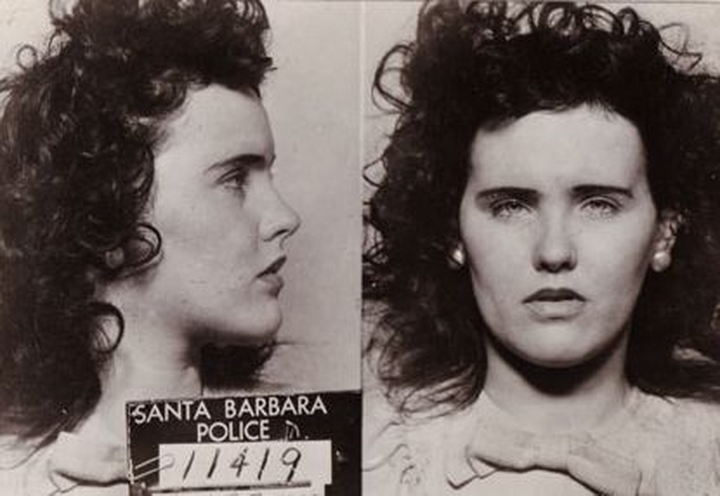
The Black Dahlia murder is one of Hollywood’s most enduring mysteries. In January 1947, the body of 22-year-old Elizabeth Short was found in a Los Angeles neighborhood, gruesomely mutilated and bisected at the waist. This horrifying sight, initially mistaken for a mannequin due to the absence of blood, marked the beginning of a mystery that continues to intrigue and horrify to this day.
The FBI, alongside the L.A. Police Department, conducted an extensive investigation. Short, a Hollywood hopeful, had previously been arrested for underage drinking and had applied for a job at the Army’s Camp Cooke, leaving a trail in FBI records. Despite efforts, including examining students at the University of Southern California Medical School and chasing leads on an anonymous letter, the murderer remains unidentified.
The “Black Dahlia,” a name given by the press, likely in reference to Short’s clothing style and the contemporary movie “The Blue Dahlia,” remains an emblem of Hollywood’s dark side. The case symbolizes the dangers that young hopefuls can face in the pursuit of fame, and the enduring fascination with Hollywood’s unsolved crimes.
08 – Marilyn Monroe’s Mysterious Death
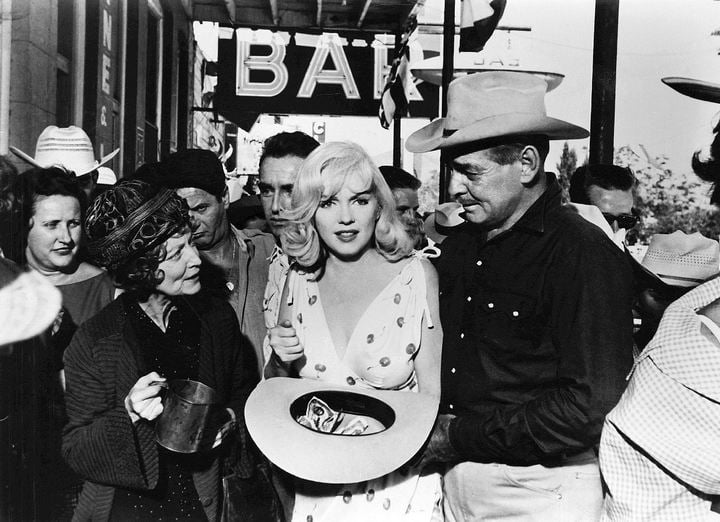
The death of Marilyn Monroe in 1962, at her home in Brentwood, Los Angeles, is one of Hollywood’s most haunting enigmas. Ruled a probable suicide due to a barbiturate overdose, Monroe’s passing sparked an array of conspiracy theories, with speculations involving high-profile figures including U.S. President John F. Kennedy and his brother Robert F. Kennedy.
Monroe, a top-billed actress and one of the most popular Hollywood stars of her time, had been battling mental illness and substance abuse. Her death occurred amid a tumultuous period in her career, including being fired from the production of “Something’s Got to Give” by 20th Century Fox. The autopsy, conducted by Deputy Coroner Thomas Noguchi, revealed a high concentration of barbiturates in her system, and the Los Angeles County coroner’s office concluded that Monroe had ingested the fatal dosage in a short time span, ruling out accidental overdose.
Despite the official ruling, conspiracy theories proliferated, questioning the circumstances surrounding her death. These theories, which gained media attention, led to a re-investigation in 1982 by the Los Angeles County District Attorney’s office. However, this investigation upheld the original findings, leaving Monroe’s death shrouded in mystery and a subject of global fascination.
07 – Roman Polanski’s Sexual Assault Case
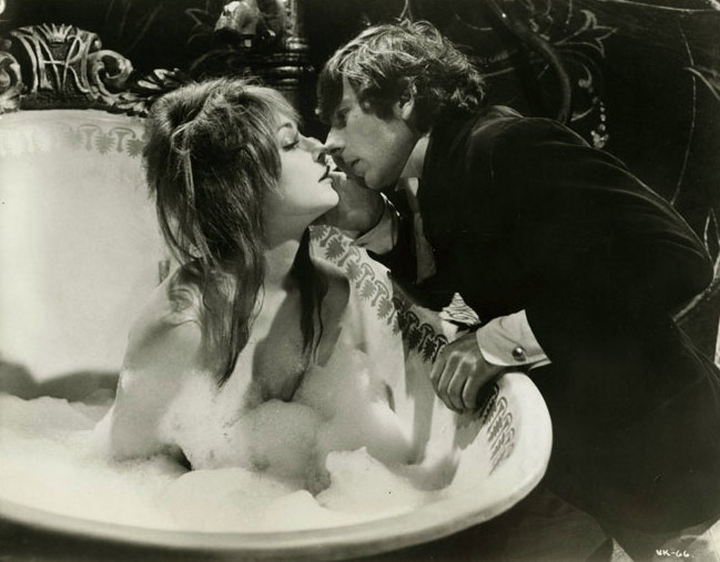
In March 1977, Roman Polanski, a renowned 43-year-old film director, faced shocking allegations. He was arrested in Los Angeles and charged with multiple offenses against Samantha Gailey (now Geimer), a 13-year-old girl. These charges included unlawful sexual intercourse with a minor, rape by use of drugs, perversion, sodomy, a lewd and lascivious act upon a child under 14, and furnishing a controlled substance to a minor. Although Polanski initially pleaded not guilty to all charges, he later accepted a plea bargain, pleading guilty to the lesser charge of engaging in unlawful sexual intercourse with a minor.
The incident, which took place at actor Jack Nicholson’s home in Los Angeles, unfolded during a private photoshoot. Geimer’s testimony revealed a disturbing sequence of events where Polanski provided her with champagne and part of a Quaalude, following which he assaulted her despite her protests. The plea bargain was agreed upon to protect Geimer from the trauma of a trial. However, before the final sentencing, Polanski became a fugitive from justice, fleeing to Europe in 1978. Since then, he has mostly lived in France, avoiding extradition to the United States.
06 – Hugh Grant’s Public Solicitation
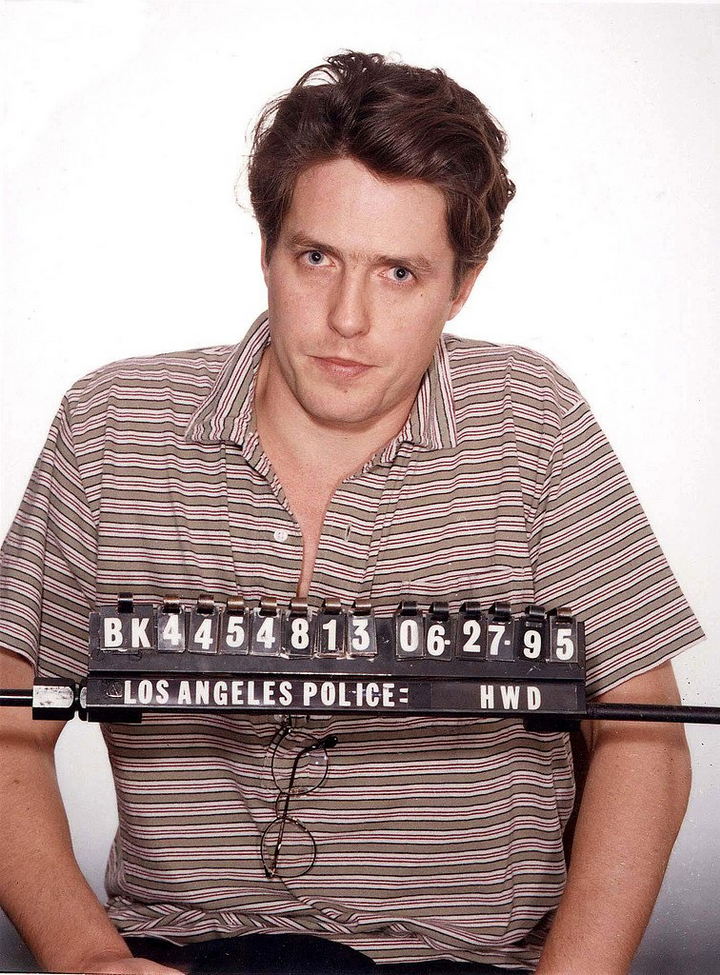
The arrest of Hugh Grant on June 27, 1995, in Los Angeles, California, came as a shock to many. The British actor, famous for his charming on-screen roles, faced legal trouble near Sunset Boulevard. He was arrested in a vice operation for receiving oral sex in public from Hollywood prostitute Divine Brown. This incident garnered significant media attention, contrasting starkly with Grant’s public image.
Grant faced legal repercussions for his actions. He pleaded no contest to the charge and was fined $1,180. Additionally, he was placed on two years’ summary probation and was ordered to complete an AIDS education program. This scandal, occurring at the peak of his career, brought a mix of public censure and sympathy, impacting both his personal and professional life.
05 – The O.J. Simpson Trial
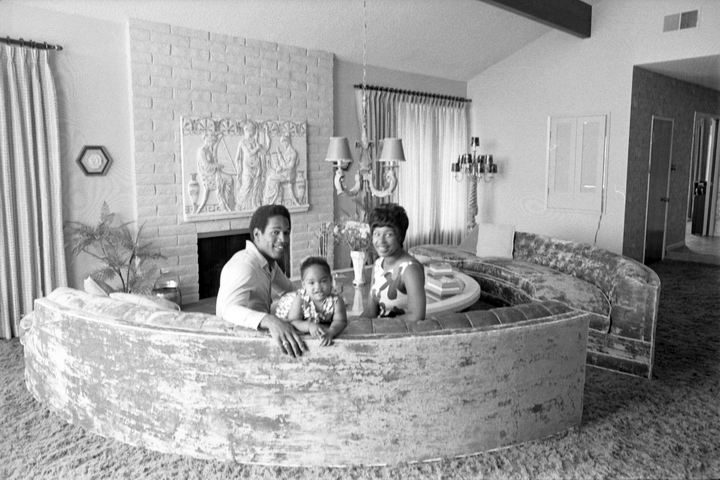
The trial of O.J. Simpson, a former NFL player, broadcaster, and actor, for the murder of his ex-wife Nicole Brown Simpson and her friend Ronald Goldman was a defining moment in American legal history. Dubbed as the trial of the century, it captivated audiences worldwide. The murders, which occurred outside Brown’s condominium in Brentwood, Los Angeles, on the night of June 12, 1994, led to a trial that lasted eleven months, from November 9, 1994, to October 3, 1995.
Despite the significant amount of forensic evidence presented by prosecutors, Simpson was ultimately acquitted of both murder counts. The trial was particularly notable for how the defense utilized the city’s racial tensions and mistrust towards the LAPD to influence the jury’s decision, leading to significant public debate and division over the verdict. This division was evident in the varying reactions across different ethnic groups, with a notable “racial gap” in perceptions of the trial’s outcome.
Following the criminal trial, a civil suit was filed against Simpson by Goldman’s father. In 1997, the jury found Simpson responsible for the deaths of both Goldman and Brown. The Goldman family was awarded $33.5 million in damages. However, they received only a small portion of this amount. Simpson later relocated to Florida, a state with laws protecting personal assets from seizure to cover liabilities incurred in other states.
04 – Winona Ryder’s Shoplifting Incident
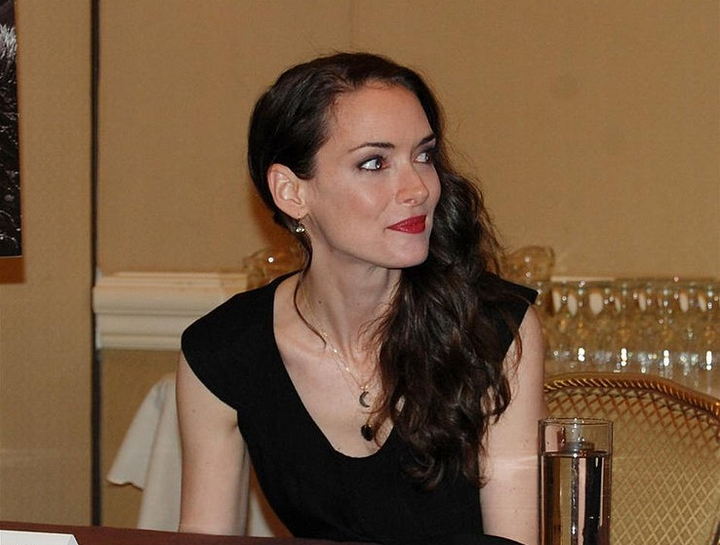
In December 2001, Winona Ryder, known for her roles in films like “Girl, Interrupted,” “Beetlejuice,” and “Little Women,” faced a shocking downturn in her career following a shoplifting incident. Ryder was convicted of stealing $5,000 worth of designer clothes from Saks Fifth Avenue in Beverly Hills. This unexpected event led to her receiving three years of supervised probation. And also completing 480 hours of community service, and a fine of $2,700. Additionally, she was ordered to pay compensation to Saks for the stolen items and undergo counseling.
This incident caused a significant hiatus in Ryder’s acting career. Reflecting on this period, Ryder acknowledged the public perception that she had disappeared in the 2000s. However, she explained that she had shifted her focus to other interests and personal growth during this time. This incident is often cited as an example of how personal challenges and public scrutiny can impact the careers of high-profile individuals in Hollywood.
03 – Mel Gibson’s DUI and Controversial Statements
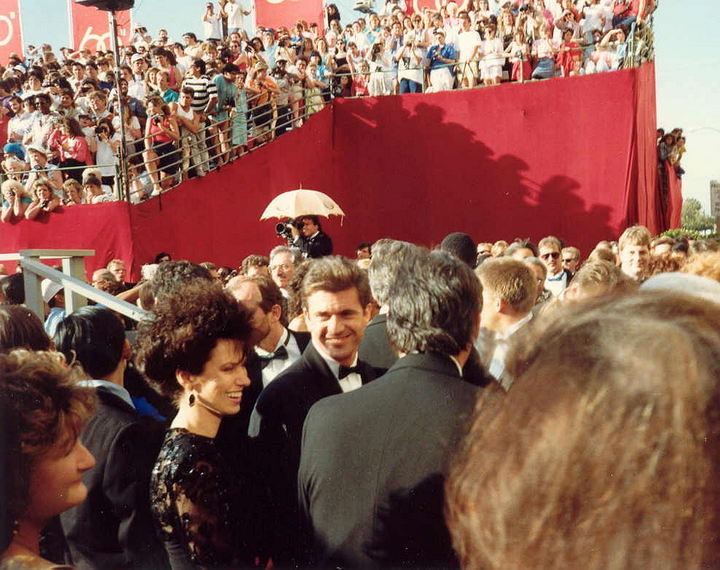
In July 2006, Mel Gibson faced a severe setback in his career following an arrest for driving under the influence (DUI) in Malibu, California. He was pulled over for speeding in his Lexus and subsequently failed a Breathalyzer test, revealing a blood alcohol level of .12, over the legal limit of .08 in California. Gibson was arrested and later released on a $5,000 bail.
The incident not only highlighted issues related to DUI but also brought to the forefront Gibson’s controversial statements made during the arrest. These statements severely impacted his reputation, both within the entertainment industry and among the public. The fallout from this event serves as a reminder of the significant consequences that personal actions can have on public figures, especially when those actions clash with societal values and expectations.
02 – The Harvey Weinstein Scandal
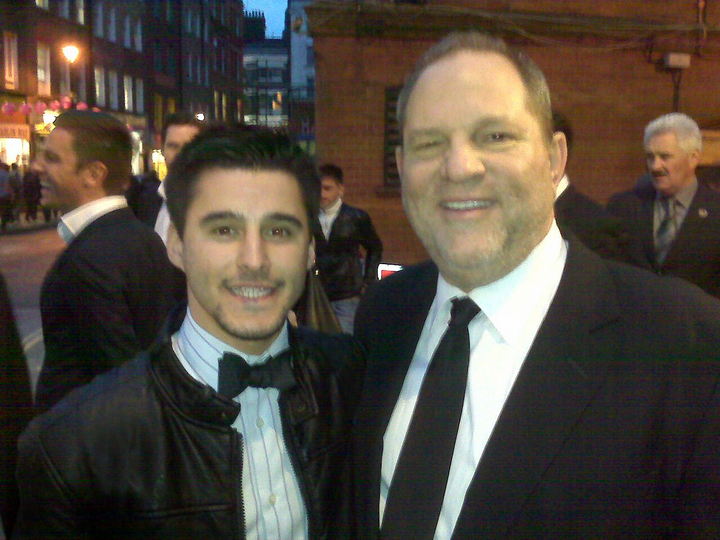
The Harvey Weinstein scandal, which surfaced in 2017, marked a pivotal moment in Hollywood and global discussions about sexual misconduct. Investigative reports by The New York Times and The New Yorker revealed that over 80 women in the film industry accused the film producer of rape, sexual assault, and sexual abuse over at least 30 years. This led to Weinstein’s dismissal from The Weinstein Company, his expulsion from professional associations, and a retreat from public view.
In February 2020, Weinstein was found guilty of rape in the third degree and a criminal sexual act, resulting in a 23-year imprisonment sentence. The coverage of this scandal by The New York Times and The New Yorker was awarded the Pulitzer Prize for Public Service in 2018. Importantly, the scandal triggered the #MeToo movement, empowering many women to share their experiences of sexual assault and harassment, leading to the ousting of many powerful men from their positions. The ripple effect of this scandal, often referred to as the “Weinstein effect,” has had a lasting impact on various industries. And has shifted the conversation around sexual misconduct and accountability.
01 – The College Admissions Scandal: A Tale of Privilege and Deception
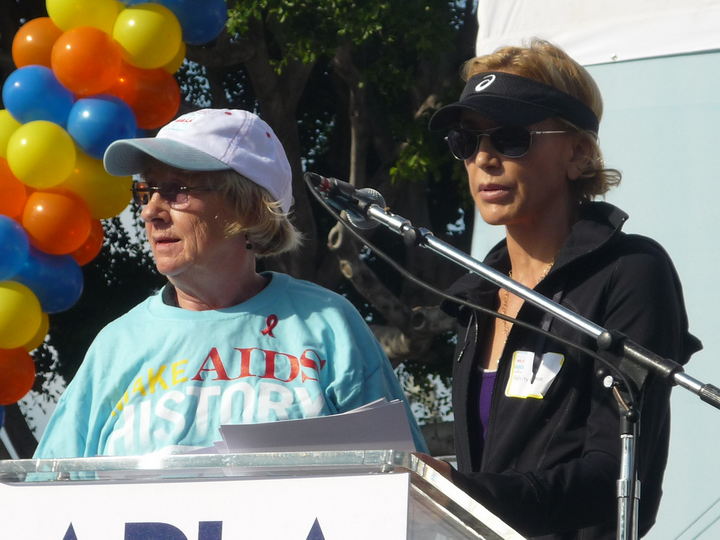
In 2019, the College Admissions Scandal, also known as “Operation Varsity Blues,” erupted into the public sphere, casting a harsh light on the intersection of wealth, fame, and education. At the heart of the scandal were prominent figures like actresses Lori Loughlin and Felicity Huffman, who became emblematic of the lengths some would go to secure elite college admissions for their children, by any means necessary. This scandal exposed a web of deceit involving parents, college coaches, and college admissions consultants.
Lori Loughlin and her husband, Mossimo Giannulli, became the subject of intense media scrutiny after being accused of paying $500,000 to secure their daughters’ admission to the University of Southern California as fake athletic recruits. Loughlin’s public image, once characterized by her wholesome roles on television, was irrevocably tarnished. Her actions seemed to starkly contrast her on-screen persona, leaving fans and the public disillusioned.
Felicity Huffman’s involvement, though less financially extensive, was no less significant. She admitted to paying $15,000 to inflate her daughter’s SAT scores. It was a move that led to legal repercussions and a brief prison sentence. Unlike Loughlin, Huffman’s prompt acknowledgment of her wrongdoing and subsequent public apology allowed for a potential path towards image rehabilitation. Yet, the scandal raised critical questions about fairness in college admissions and the privileges afforded to the wealthy and famous.
The Role of Social Media in Amplifying Celebrity Scandals
Social media has revolutionized the way celebrity scandals unfold and are perceived by the public. It has transformed from a mere communication tool to a pivotal element in the dynamics of fame and public opinion. Platforms like Twitter and Instagram have a multifaceted and far-reaching impact. This is particularly evident in high-profile events like the College Admissions Scandal.
- Immediate Backlash: Social media’s instant nature means that any misstep can quickly spiral into a major controversy. Celebrities are now more vulnerable to public criticism and backlash for their actions. The College Admissions Scandal, for instance, saw immediate and widespread condemnation across various social platforms.
- Increased Influence: Celebrities wield significant influence on social media, often using it to sway public opinion or advocate for causes.
- Crisis Management: Social media has necessitated a new approach to managing public relations and crises. Celebrities must now be adept at addressing controversies in real time to mitigate the impact on their public image.
- Demand for Authenticity: The current era requires a level of authenticity from celebrities on social media. Audiences expect genuine content that resonates with them, making it challenging for celebrities to balance personal privacy with public expectations.
- Privacy Trade-Off: The accessibility and transparency offered by social media come at the cost of reduced privacy. Celebrities now face the delicate task of balancing interaction with the public and maintaining their private lives.
In conclusion, the role of social media in celebrity scandals is a double-edged sword. They are offering both a platform for influence and a potent catalyst for controversy. It’s a dynamic landscape where public opinion, real-time reactions, and the quest for authenticity constantly reshape the narratives of fame and scandal.
Reflecting on the Reverberations of Hollywood Scandals
As we conclude our exploration of Hollywood Scandals, it’s evident that these events are more than just fleeting moments of intrigue. They are reflective of deeper societal dynamics and the complex interplay of fame, morality, and public perception.
Celebrity scandals, while often sensationalized, also serve as windows into the values and norms of society. They challenge us to consider the ethical boundaries of behavior and the consequences of crossing them. As we’ve seen, the outcomes of these scandals vary greatly. Some celebrities manage to rebuild their careers, while others face lasting repercussions.
In the end, these scandals offer us an opportunity to reflect on our own values and the standards we set for those in the public eye. They prompt us to question the very nature of celebrity and the responsibility that comes with influence and fame. As observers, we are left to ponder the impact of these events on our own perceptions and beliefs about celebrity culture. Hollywood scandals have always captured public attention, reflecting both the highs and lows of celebrity culture. These 10 scandals are just a glimpse into the complex tapestry of fame, fortune, and fallibility that defines Hollywood.


